There is a lot to cover on Wednesdays. We should know, as collectively, we read an insane amount of comics. Even with a large review staff, it’s hard to get to everything. With that in mind, we’re back with Wrapping Wednesday, where we look at some of the books we missed in what was another great week of comics.
Let’s get this party started.

Chimichanga: The Sorrow of the World’s Worst Face #1
Written by Eric Powell
Illustrated by Stephanie Buscema
Reviewed by Matthew Garcia
“Chimichanga: The Sorrow of the World’s Worst Face” is a continuation of a 2009 Albatross Exploding Funny Book series by Eric Powell. But that doesn’t really matter. I honestly wasn’t even aware of this title until I was researching the creators of the book. The best thing about “Chimichanga: The Sorrow of the World’s Worst Face” #1 is its ability to stand on its own, to welcome in new readers while, I assume, providing plenty of familiar faces for longtime fans. That it does this with exuberance and vivid artwork is an added bonus.
Lulu is a bearded girl who lives at Wrinkle’s Traveling Circus, led by her grandfather. She has a song in her heart and pep in her step. Among her chores is caring for this giant green creature she’s affectionately named Chimichanga. Everything seems to be going well for this motley crew, until this mysterious man with a Cousin Itt haircut suddenly appears. Lulu attempts to incorporate him into circus life, but the dude’s not exactly receptive.
Powell and Buscema use their space mostly for old school cartoon gags. A good portion of the page count is devoted to Lulu cleaning out Chimichanga’s stomach. The book subscribes to the notion that the more ridiculous an item, the funnier the gag. And it does work for the material. So the situation escalates from Lulu finding a tree stump to evil potatoes and beyond. Buscema goes broad, especially with her over-the-top expressions and paneling that services the story.
It does take some time for “Chimichanga: The Sorrow of the World’s Worst Face” #1 to really be about anything. It’s definitely more concerned with introducing the characters, environment, and tone to this world. When the plot does finally starting shifting into gear, we’ve already been so caught up in this world it’s like an added bonus.
Final Verdict: 7.5 – Buscema and Powell’s exuberance with the material is infectious.
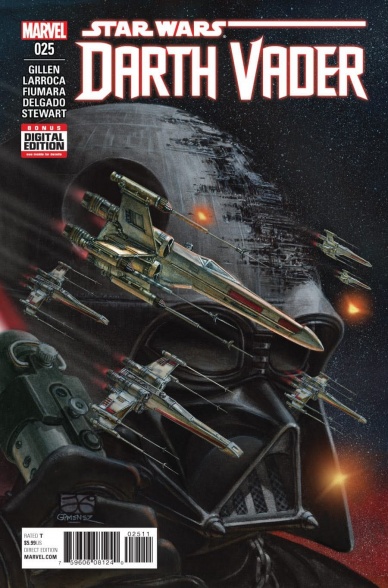
Darth Vader #25
Written by Kieron Gillen
Illustrated by Salvador Larroca and Max Fiurina
Reviewed by Alice W. Castle
Here we are, the end of the road for “Darth Vader”. Though, for obvious reasons, this is not the end of the road for… well, anyone involved really. This is merely the closing of a chapter in Vader’s life and the start of a new one for Aphra and Kieron Gillen. Which brings me, immediately, to my biggest beef with “Darth Vader” #25. Darth Vader is a character that has such a heavily entrenched lore that it’s hard to find new avenues to take him, but at the end of this issue and this series, I have to wonder what was accomplished here? All we have gleaned from this series is a telling of how Vader regained his place by his Emperor’s side and the Emperor’s trust in him, something we already knew happened because we’ve seen The Empire Strikes Back.
I have to wonder if, at some point in writing the series, Kieron Gillen got more caught up in writing Doctor Aphra than he did Vader. Spoiler alert, but having this issue serve largely as a prologue to Aphra’s already announced spinoff series pretty much shot this entire series in the foot at the last second. Sure, Vader gets to go off safe in the knowledge that he’s the biggest badass of the galaxy, but this ending kind of makes him out to be a joke. His conflict with Cylo, largely wrapped up in the stellar prior issue, is over so quickly here it is essentially an afterthought. All that was left, it seemed, was to simply kill Cylo and be done with the whole affair. The issue then switches gears to be much more concerned in how Aphra is going to survive dunking on two Sith Lords.
Continued belowIt’s mostly frustrating because this series nailed the landing so hard last issue only to swerve in the actual finale to pretend that this whole journey has been leading up to the point where Aphra breaks off to tell her own story. Nothing has actually changed for Vader, very little depth has been added to the character that wasn’t already there and I come back to the question of what was actually accomplished by this series? What do we know now that we didn’t before the first issue? Mostly, that Kieron Gillen prefers writing his own strangely irreverent characters over Darth Vader himself and that setting stories in a point in the Star Wars timeline where the eventual end point is set in stone makes these stories in and of themselves seem inconsequential.
This wasn’t a terrible last issue, for the record. It was simply disappointing to me after how stellar the previous was in comparison. For this issue to not only allow Aphra to survive the series, but focus more on her escape from Vader than on Vader himself and how this series has shaped him as a character undermines the whole series.
Final Verdict: 6.1 – Not the endcap this series deserved, but not inherently bad in and of itself. Not the lead in to the “Doctor Aphra” series that that series needed, either, because it’s hard to not come away from this issue with a bad taste.
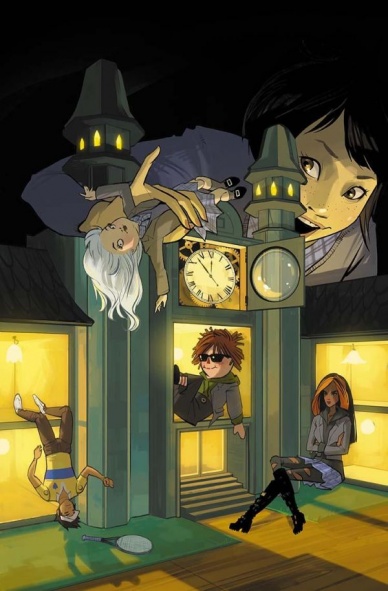
Gotham Academy: Second Semester #2
Written by Becky Cloonan, Brenden Fletcher & Karl Kerschl
Illustrated by Adam Archer
Review by Ken Godberson III
Welcome back everyone, to the back that constantly flies under the radar. Issue #1 (or, let’s face it, “Gotham Academy #19”) was about the introduction of a very new element to the series in Olive’s new roommate Amy. Conversely, issue #2 is about the reintroduction of the familiar and seeing how it blends with the new. The rest of the crew is back (including some nice moments from bit characters like Eric and Katherine) and already the weirdness is beginning to start up again involving the brand new Witch Club.
But from the character side, we have something a bit more interesting: Maps’ reaction to Amy. All this time, Maps has been the cheerful and adventurous heart of the book. Here we get to see a bit of jealousness and possessiveness when she perceives a stranger trying to take her friends away. I’m not even saying this is a bad thing. It’s good for characters to show negative traits, it makes them more of a whole character and provides opportunity for more character-centric stories.
Adam Archer, Sandra Hope, Msassyk and Serge Lapointe continue to be really good on the artwork. I’m glad that the credits have now specified that Msassyk provides “background painting” and Lapointe as colorist because the colors have always been key for this book. To put it simply, the key has always been ambiance. The coloring has been what provides the mood, whether it’s eerie glows on spooky nights, or when the lighting dims to portray sadness. It’s a lot of using the artwork to tell the story over dialogue and it continues to be a great feature of the series.
That being said, like I said above, this issue is very much reintroducing elements to accompany the new that has been added. As such, it can be a bit too familiar at times. Nothing bad, it’s not a weak issue, but it is just another issue of “Gotham Academy”. It’s not like “Gotham Academy #7” or the Annual and such, but it doesn’t need to be.
Final Verdict: 6.7- Fine for what it is, continuing to set up for the future of the book.
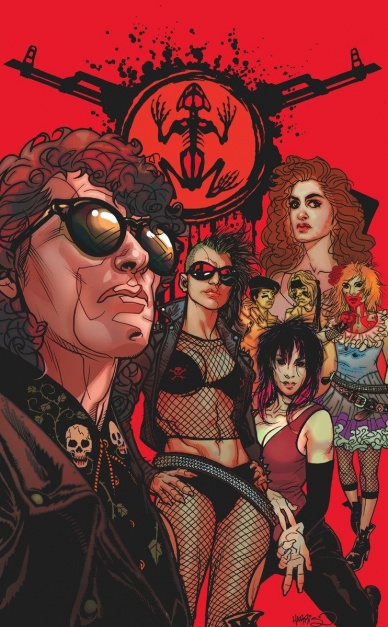
The Lost Boys #1
Written by Tim Seeley
Illustrated by Scott Godlwski
Reviewed by Brian Salvatore
I grew up loving vampires and, since I grew up in the 80’s and 90’s, that means that I had a love for The Lost Boys. It’s a totally cheesy, dated horror movie, but it scared the hell out of me as a kid, and some of the imagery is still scarier than a lot of what has followed from vampire cinema. Keifer Sutherland’s David, in particular, was a really terrifying figure to me, and his snarling fangs are an image that stuck with me over the years.
Continued belowI say all of that to establish that I am the exact demographic that Vertigo was going for with “The Lost Boys” – I’m a comic buyer of the right age, with enough nostalgic feelings to plop down money for this book. And, for the most part, it lives up. It builds on some of the mythology from the film, it treats the characters ‘accurately’ to what we saw on screen, and there isn’t too much reliance on cheesy 80’s references – but the few that are there more or less stick the landing.
A big part of that is Godlewski’s art. He doesn’t fall into the trap of trying to perfectly draft the actors from the film into the book, rather just going with the broad strokes, and spending his efforts to craft expressive faces and setting a tone through his artwork, rather than focusing on being as realistic as possible to Corey Feldman’s glorious mug.
Seeley approaches the issue with a measured approach, taking the first half of the book to, more or less, remind the reader of all the important details they’ll need, in case it has been a few years since they’ve seen the film. We meet every character essentially where we’d expect to – the Frog brothers practicing hunting, Sam trying to pick up a girl, David being the good natured guy he is. Very little is seen of the vampires at the heart of the story, but that is intentional. When they do appear, they instantly make their presence known.
The book works for all the reasons it should; this isn’t a revolutionary comic that will change your life. It’s a fun throwback to a gloriously dated film that manages to be more than just a tossed off licensing deal.
Final Verdict: 7.5 – Hey, the saxophone player showed up!
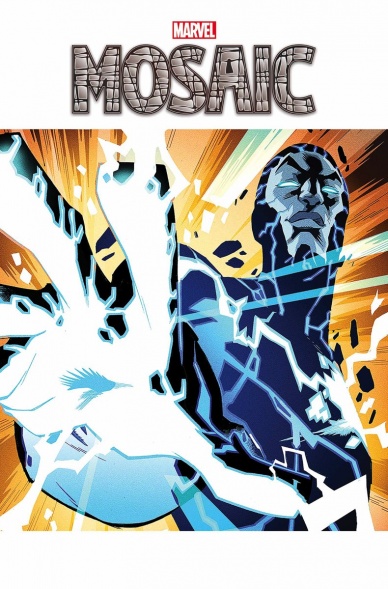
Mosaic #1
Written by Geoffrey Thorne
Illustrated by Khary Randolph and Emilio Lopez
Reviewed by Jess Camacho
It’s another week of comics which means there’s another barely publicized Marvel #1 out. This week, Geoffrey Thorne, Khary Randolph and Emilio Lopez introduce us to Marcus Sackett, a superstar basketball player with a full hand of rings and MVPs. Marcus is celebrating his latest win when a Terrigen Mist cloud hits and transforms him into his Inhuman form.
“Mosaic” #1 should be something that I was really into. The concept is really great and Marcus is a very different character who actually has a chance to grow as a human being but the writing didn’t all work – Marcus’ girlfriend in particular. The problem with “Mosaic” is that it will get lost in the rest of Marvel’s overstuffed line up and it will definitely get lost when the X-Men/Inhumans crossover things gets started.
What really works about “Mosaic” is the actual superpower stuff. This is where the issue really begins to pull you in because this character has such a unique power set that allows for a lot of exploration in a Quantum Leap kind of way. The way Marcus deals with the powers early on is written in a very natural way for someone going through something completely out of the norm like this and Randolph’s art is fantastic. He approaches Marcus easing into the powers in a technological sense. He’s almost accessing a computer when he accesses the person he’s becoming. It’s invasive and something I hope the series can explore in more depth because it’ll need something to separate itself from all the other random Marvel characters suddenly getting solo series.
Final Verdict: 6.0 – It’s not bad but it’s not nearly different enough to stay with.

Solo #1
Written by Gerry Duggan and Geoffrey Thorne
Illustrated by Paco Diaz
Reviewed by Robbie Pleasant
Now that Deadpool’s “Mercs For Money” has broke up, Solo is, well, solo again, and has a new run to celebrate. As a “one-man war on terror,” he’s been continuing the mercenary game, and after his team’s breakup, well, he’s still got the comedic traits from his time in the pages of “Deadpool.”
The balance of comedy and action is a tricky one to strike; we want to be able to take our hero seriously, and be impressed by his skills as a spy and secret agent, yet his fumbles and mistakes are the source of humor. As such, the comic often switches between moments of awesome spy work and combat, and moments of Solo comedically goofing it up. As such, it strikes a slight imbalance; it can’t be taken entirely seriously, but it still tries to be.
Continued belowThe issue is assisted by the artwork by Paco Diaz, featuring strong character designs and scenery. Even the inside of an elevator gets a good design, and the scanner in Solo’s eye adds plenty of neat spacing and designs as the shots show the readers his perspective. It works well with his teleportation, which is drawn in such a way that it still carries momentum from previous panels.
While the action is good, flowing nicely and well-paced, the artwork’s real strength is in the expressions. An establishing shot of just a bar scene shows a wide range of character styles and looks, but Solo himself gets the biggest and most expressive looks, nicely showcasing a range of emotion, from smugness to panic.
Also, there’s a little dog in a tiny suit, that counts for a fair deal.
However, we still get some nice characterizing moments for Solo and his supporting cast. We do see him pull off some nice moves, and prove himself willing to take on some noble tasks (for a good paycheck, of course), so we’re given reason to want to see him succeed. His “expendable” status means he’s going to be constantly thrown into life-or-death situations, so there should be high stakes and plenty of action in later issues (although let’s be honest, he’s more likely to be killed off in a more popular character’s comic to raise personal motivation).
Final Verdict: 6.5 – A solid start, with great artwork and good characterization, although some difficulty striking the right tonal balance.
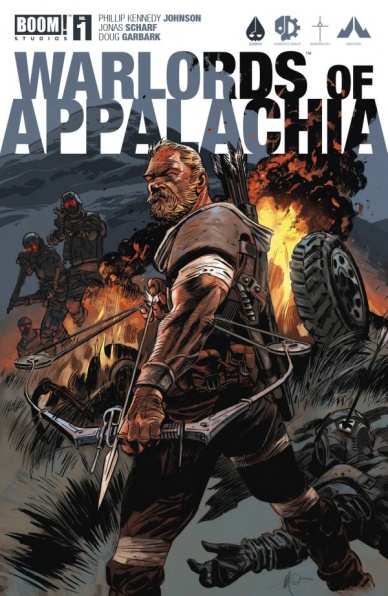
Warlords of Appalachia #1
Written by Phillip K. Johnson
Illustrated by Jonas Scharf
Reviewed by Liam Budd
This latest new release from Boom! Studios sees a future not too far from our own, where the Commonwealth of Kentucky has seceded from the rest of the United States. We’re not given a huge amount of information to how and why this has happened, and the information we do get comes in dribs and drabs throughout the issue. This is sometimes works in favour for the book as we never find ourselves too overwhelmed and writer Phillip K. Johnson gets to hold on to his secrets a little longer for future issues. In fact, Johnson seems to be holding a lot back for later in the series. The solicit for “Warlords of Appalachia” warns us to expect some heavy sci-fi elements, though there is only the faintest of hints to what that may be.
The book is surprisingly dense for a first issue, with an abundance of lengthy dialogue and interesting concepts to set up. Johnson is clearly inspired by the current events happening in America right now with the election and Trump. In fact, either Johnson has impressive precognition abilities or this issue has been released at just the right time as it seems to eerily and depressingly run parallel with the Trump campaign’s meltdown. Anybody interested in the contradictions of the Right will find this book fascinating.
Jonas Scharf does an excellent job in creating a large, ravaged landscape for the book’s protagonist, mechanic Kade Mercer, to battle a corrupt army in. The book’s visuals are much more impressive when on a larger scale; when Scharf’s frame is widened, his work is clear, concise and full of detail. However, when he has to focus in, his line work appears inconsistent and messy. Even his character work follows this same structure, with Mercer, who is physically much more imposing than other characters, is drawn much more finely than anybody else.
Final Verdict: 7.5 – A controversial comic book that hits and misses.






